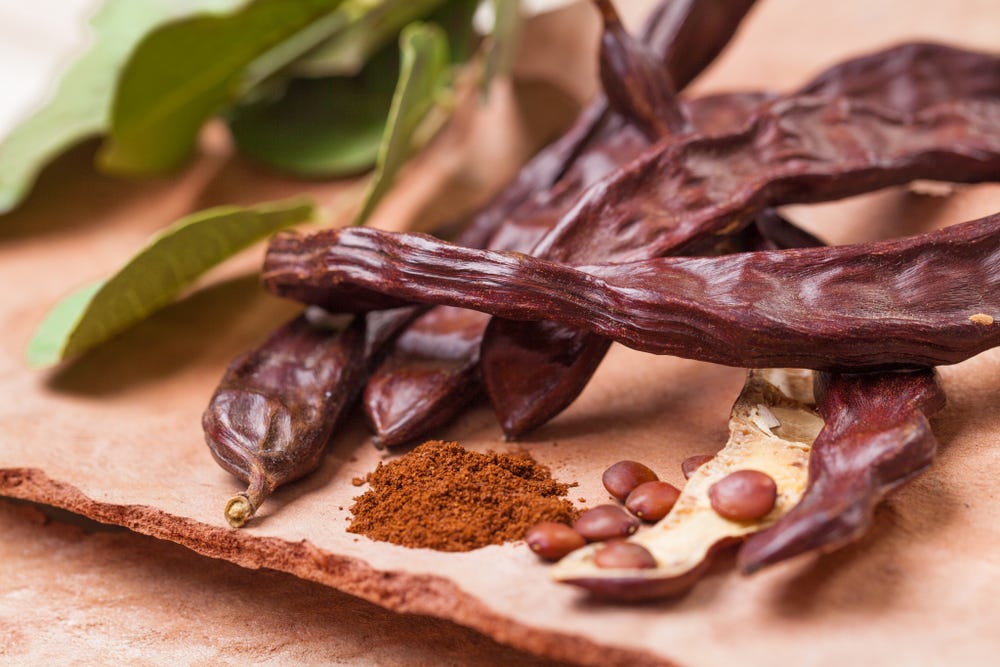The pods of the carob tree have been used for thousands of years in the Mediterranean to create teas, sweeten drinks, and even cure ailments. The carob pod has even been used as a standard of measure in evaluating gemstones; where one carob pod equals one carat. Today, the pod’s fruit is typically seen in animal feed and used as a chocolate substitute, due to its sweet, cocoa-like taste. The pod’s seeds are used as a gum in food and beverage industry to add thickness and improve texture.
Carob gum (or locust bean gum) is made from the seeds of the carob pod (see picture). The seeds are separated out from the pod and treated in acid to remove the outer part of the seed. The seed components are further separated out and milled to produce a fine, white powder called locust bean gum. Non-GMO, vegan, and (sometimes) organic, locust bean gum is slightly chocolate in flavor and has a high (soluble) fiber content.
Locust bean gum is used in molecular gastronomy and throughout the food and beverage industry. In molecular gastronomy, it is used to stabilize, texturize, thicken, and gel liquids. In the food industry, locust bean gum is commonly used to create ice cream, as it adds creaminess and stabilizes the ice cream through the freeze/thaw cycle. It is also seen in yogurts, cream cheese, dressings, and even infant formula to thicken, add creaminess, and help prevent the separation of these products. In plant-based milks and creamers, it is used to add a thick creaminess to mimic the texture experienced in dairy milk.
Opponents of locust bean gum state that it prohibits the adsorption of certain nutrients (calcium, iron, and zinc) and causes indigestion and bloating. They cite a couple of studies that show that large amounts of locust bean gum causes a reduction in the absorption of these minerals. These studies use locust bean gum at levels over ten times more than what is typically consumed in the diet. There are no studies or any indication that typical levels of locust bean gum would prohibit the adsorption of any mineral. As for the indigestion and bloating claim, there is some merit in this as locust bean gum is considered a soluble fiber, a type of dietary fiber. Soluble fibers are known to slow down digestion. Studies have shown that high amounts of soluble fiber can cause digestive discomfort, indigestion, and bloating. However, once again, locust bean gum is used in food and beverage products at low levels making the chance of this occurring low, if not non-existent.
Since locust bean gum is consumed at low levels, the benefits are few and far between. Typically, soluble fibers lower cholesterol and decrease blood sugar levels. However, since the consumption is so low it has not been proven that locust bean gum has any of these benefits. The only studied benefit of locust bean gum is with infants with gastroesophageal reflex (GER, or “spitting up”). When locust bean gum is included in infant formulas, studies have shown that infants experience less reflux (or spitting up) compared to formula that does not contain locust bean gum. These studies state that because locust bean gum thickens the formula and delays gastric emptying, it prohibits it from rising back into the esophagus after being in the stomach.
Where have you seen locust bean gum? Would you consider it a clean ingredient?




